What Is Gypsum Boards? | Properties of Gypsum Board | Types of Gypsum Board | Advantages & Disadvantages of Gypsum Board
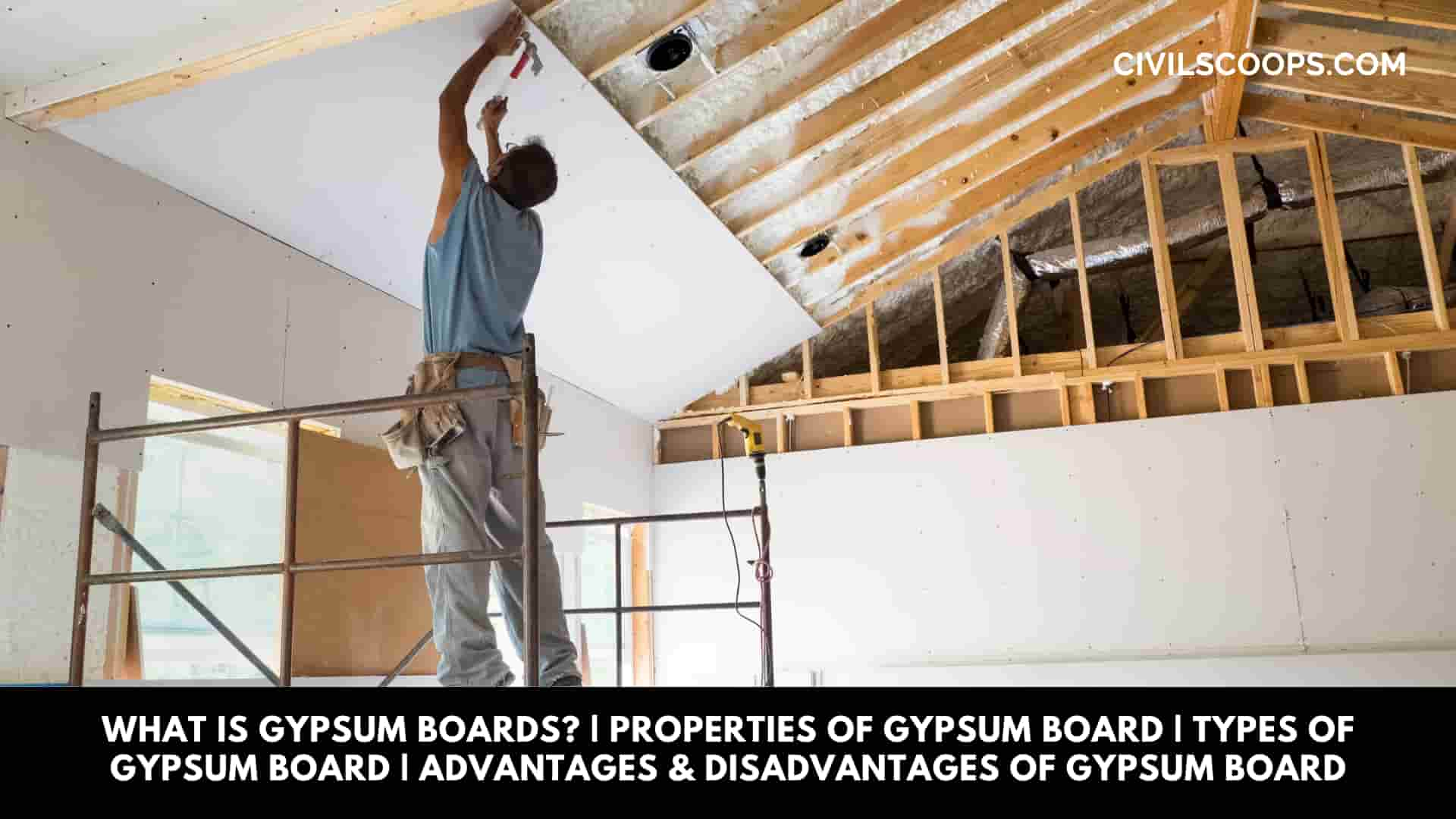
Table of Contents
Information of Gypsum Boards
There are various new innovative materials are available in the market which enhances the beauty and the functionality of the building.
The Gypsum boards are one of the popular building materials which mainly consist of the non-combustible core which is made from gypsum. The Gypsum boards are a widely used building material in the interior designing of the structure.
The Gypsum has various properties due to which there are various gypsum products are used in the construction industry. The Gypsum has various applications in construction such as plastering work, it is also used in the manufacturing of cement to control setting time.
In this article, we are going to discuss the Gypsum boards, the properties of the gypsum boards, and their applications in the construction industry as well as their advantages and disadvantages.
What is Gypsum Board?
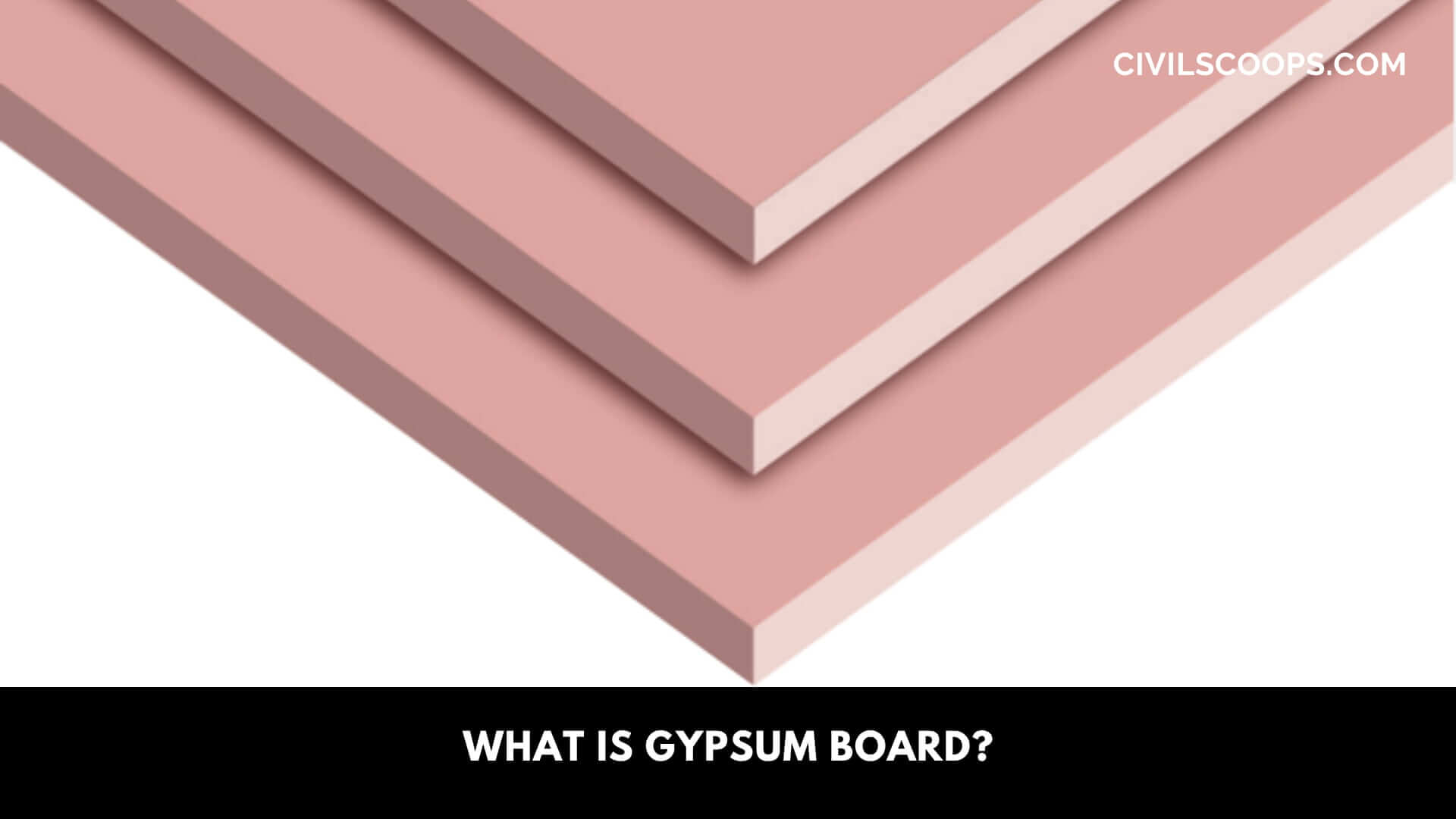
The Gypsum boards are mainly used as a surface material for the construction of ceilings and walls. Gypsum boards are widely used in the construction of the drywall where the plaster gets eliminated.
A Gypsum is a soft material that comprises calcium sulfate dihydrate which is used in the plaster of Paris and wallboards.
The Gypsum boards are designed in such a way that they can be used without plastering of the walls and ceilings and provide a smooth finish to the surface. Gypsum boards are also known as wallboard, plasterboard, or Drywall.
All Types of the Gypsum products which are available in the market consist of Gypsum as a core material and its surface is wrapped with other materials such as fiberglass.
The Gypsum panels with different edges are available in the market such as rounded edge, tapered edge, beveled edge, square edge, tongue, and groove edge.
Also Read: WPC Board Vs Plywood | Which Should Be a Better Choice | What Is WPC Board | What Is Plywood
Properties of Gypsum Board as a Building Material
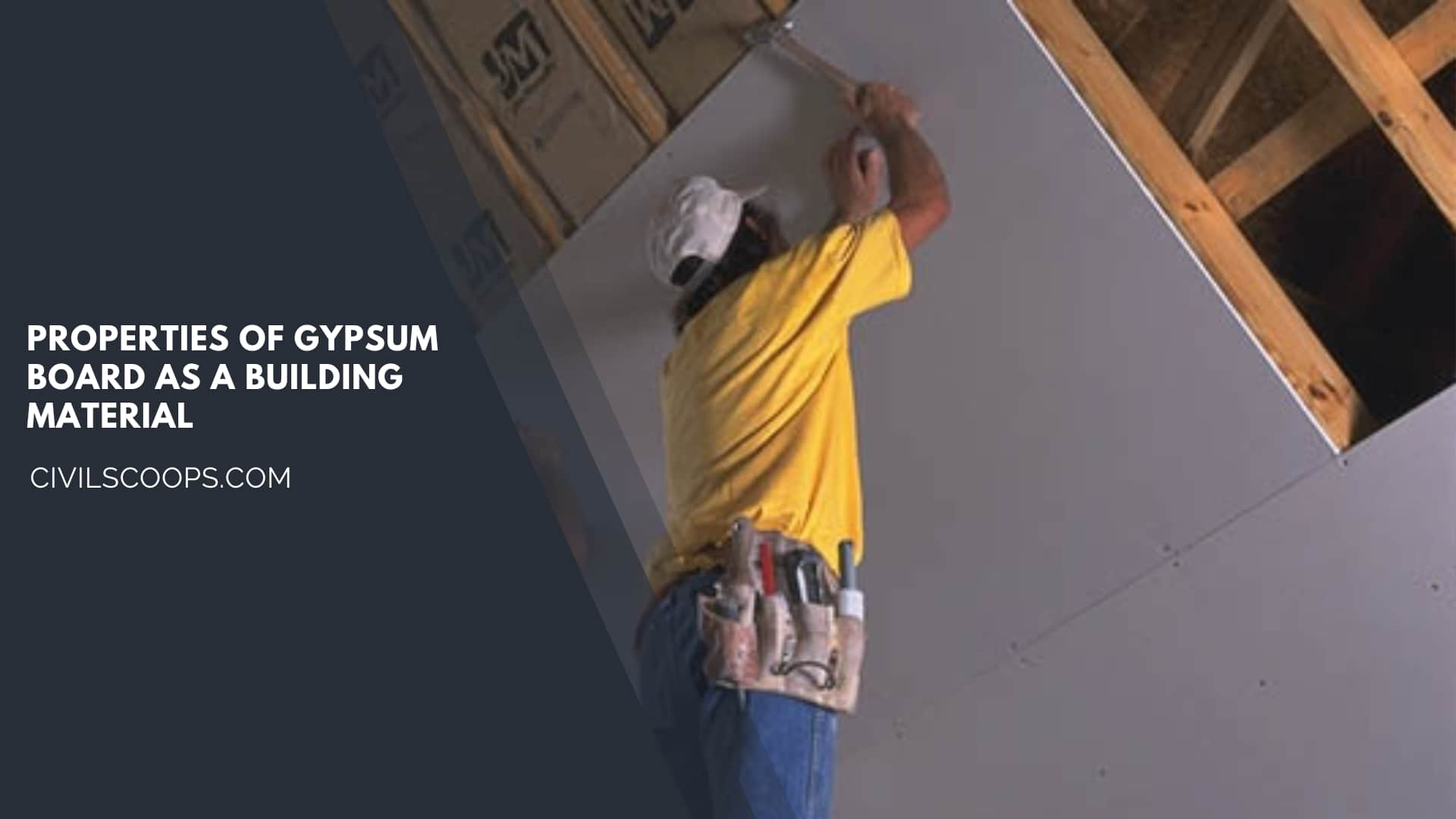
The gypsum boards possess various properties due to which it has huge demand in the construction sector
1. Gypsum Boards Have Good Thermal Properties
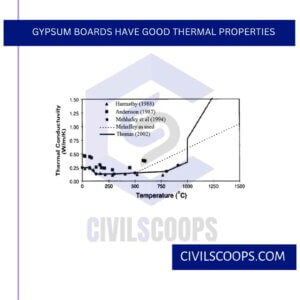
The gypsum also possesses good thermal properties due to which it provides a good balance between indoor humidity and temperature. The use of the plasterboards in the interior of the structures acts as a vapor barrier that prevents humidity in the indoor of the building.
2. Gypsum Boards Are Fire Resistant in Nature
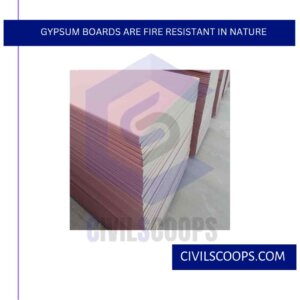
Gypsum boards are fire resistant and they stop the fire to spread further which helps to protect the structure from any fire hazards.
The gypsum has fire resistance property due to the presence of chemically bonded water which is present in the gypsum.
Whenever the gypsum boards are exposed to fire, the water present inside the gypsum gets evaporated which creates a protective layer.
3. It Has Good Acoustic Properties
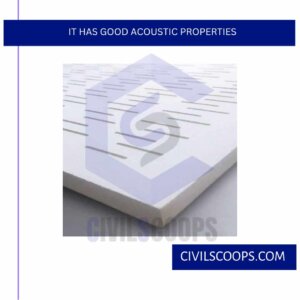
The Gypsum boards possess good soundproofing properties due to which the gypsum boards are best suitable to use in the construction of structures in the high traffic areas. The Gypsum plasterboards are specially designed for the reduction of noise and to avoid the effect of reverberation.
4. Gypsum Has Soundproofing Properties
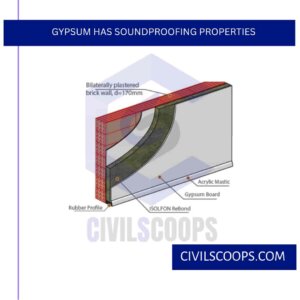
Gypsum is an energy-efficient building material that is used to insulate the rooms and reduce energy consumption in your house. Because of its soundproofing properties, it is best suitable for the construction of houses in high-traffic areas.
Gypsum boards provide a uniform and smooth surface which is best suitable in the interior designing of residential as well as commercial buildings.
Also Read: How to Reduce Construction Cost (Tips)
Gypsum Board Uses in Construction Works
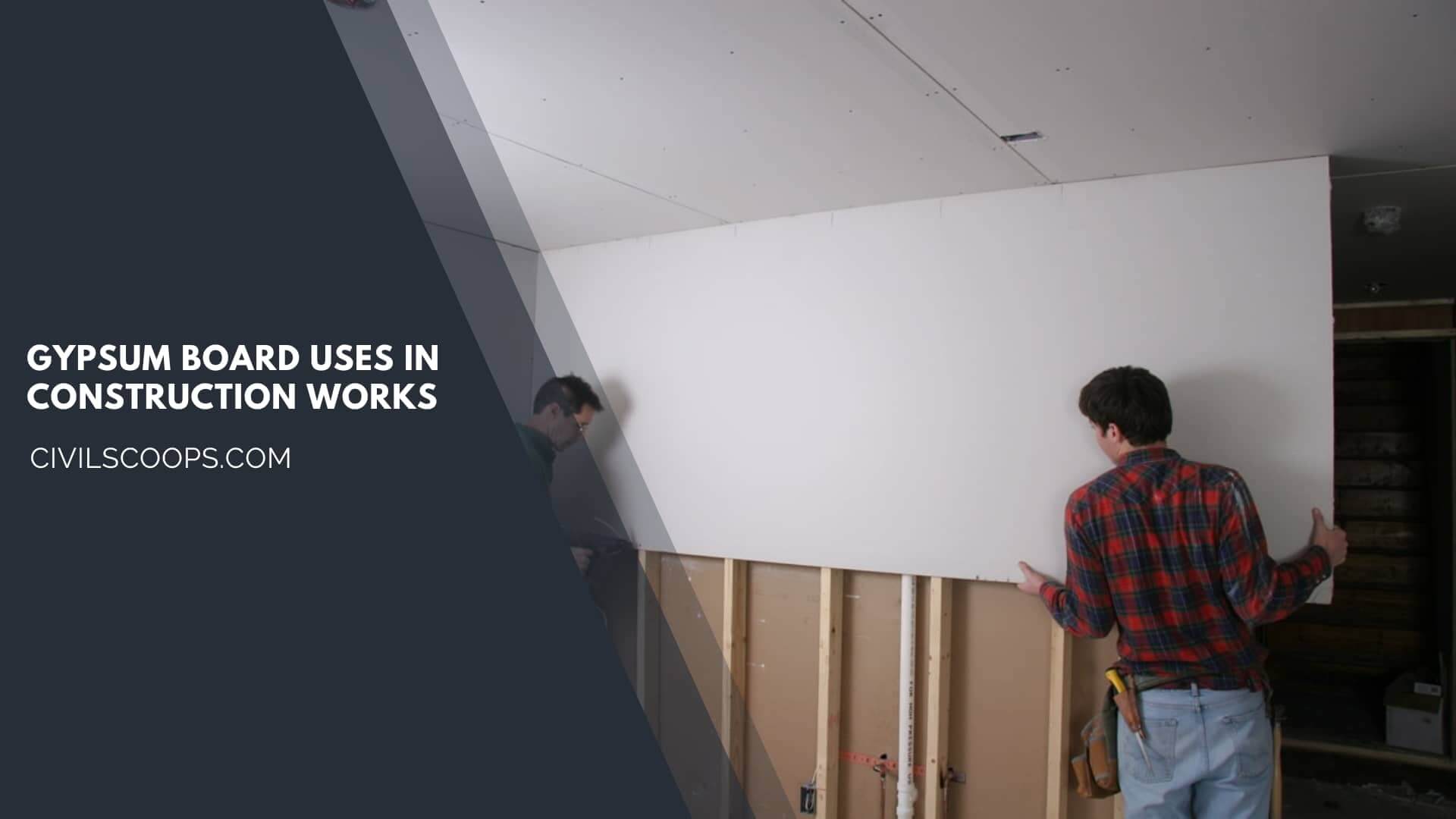
There are various applications of gypsum boards in the construction industry which are as follows
- Gypsum boards have many uses in the construction sector which are as follows
- Gypsum is also used with glass to fabricate various lightweight architectural decorations.
- Gypsum is also used in the manufacturing of cement to control the setting time.
- Gypsum blocks are used in the construction of partition walls.
- Gypsum tiles are also used for the ceilings of the buildings.
- Gypsum fireboards are used for the partitions, lining, ceilings, roofs, and floors, etc.
Types of Gypsum Board
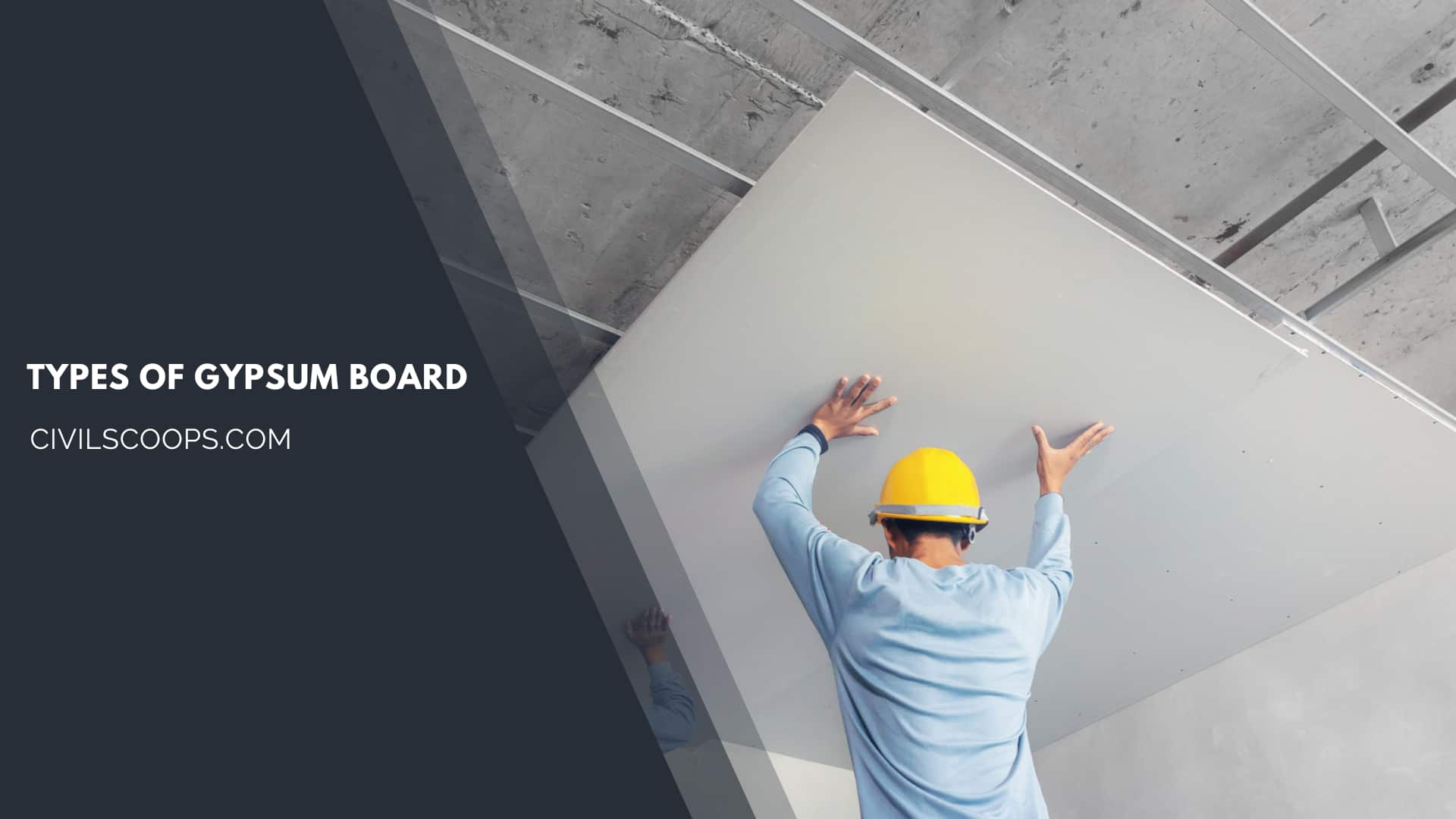
There are various types of gypsum boards are available in the market which is as follows
1. Fire Resistant Gypsum Boards
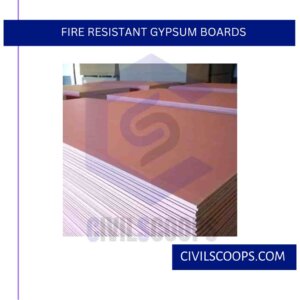
The Gypsum boards have good resistance to fire due to which they can be also used in fire-prone areas. The gypsum products consist of water which is chemically combined in the gypsum due to which it can be exposed to fire.
The Fire-resistant gypsum boards are suitable in ceilings and drywall where a high level of fire protection is required.
2. Standard Gypsum Boards
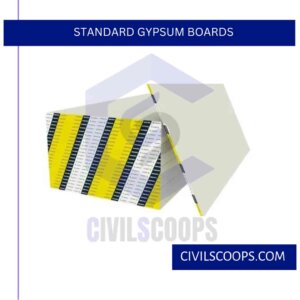
These are the common and widely used gypsum boards for false ceilings. This type of gypsum board comes with ivory cardboard on its facing surface.
3. Moisture Resistant Gypsum Boards
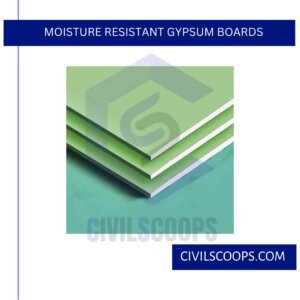
The moisture-resistant gypsum boards are used as a covering material in the interior of the walls. It has wide applications in Residential and commercial buildings where moisture protection is very essential. It is also used as a wall tile in the walls of bathrooms and areas which are subjected to moisture.
The moisture-resistant gypsum boards have various applications such as the base for the external soffits in a sheltered position.
4. Backing Gypsum Board

The backing gypsum consists of multiple layers in the construction work where several layers of the gypsum boards are used as a soundproofing material and provide strength and fire resistance to the walls.
The backing gypsum boards are used for the walls and ceilings and it is also used for the self-leveling screeds.
Also Read: What Is Paint Finishes for Walls | Types of Paint Finishes | Types of Paint Finishing
5. Impact-Resistant Gypsum Panels
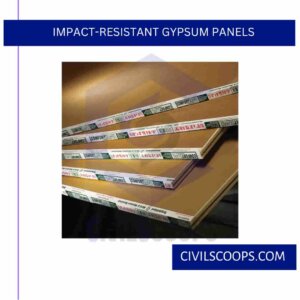
The standard or simple type of gypsum panels does not have resistance to the impact loads which makes them less durable. The Impact resistant gypsum panels are the special type of panels that offer great resistance to the impact loads.
Advantages of Gypsum as a Building Material
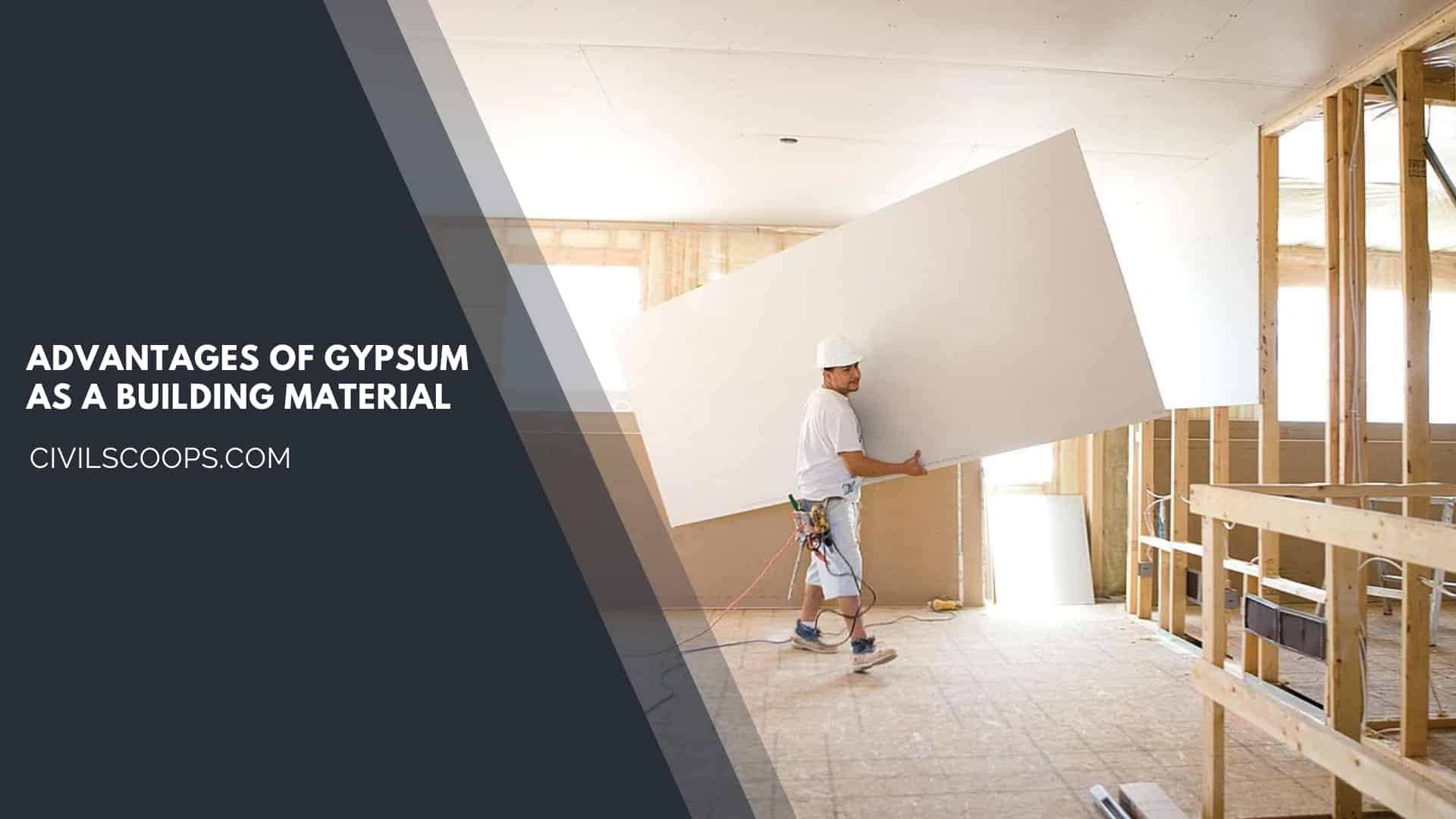
The Gypsum board has various advantages in the construction sector which are as follows
- Gypsum provides a smooth finished surface: Gypsum is also used in plaster which provides a crack-free smooth surface. The Gypsum boards provide a continuous smooth finish surface on which you can directly apply paint.
- Easy to Install: The gypsum products are very easy to install and do not require skilled labor for their installation. The installation process is easy, clean, and fast.
- Gypsum can be used as a final coat: The plaster done with the help of gypsum does not require paint, it can be used as a final finish. It gives an attractive white finish to the surface of the wall.
- Gypsum enhances the beauty of the structure: Gypsum is the most widely used material in the interior design of the building because of its attractive and stunning design. The Gypsum products can be used for various decorative purposes in the interiors which enhances the aesthetical features of the building.
- It helps to balance the indoor atmospheric conditions: The Gypsum has the property of balancing the indoor temperature and humidity of the building. The Gypsum is an environmentally friendly building material that provides high thermal and acoustic insulation.
- A variety of Gypsum products are available in the market: There are various gypsum products which are available in the market which meet several aesthetical requirements.
Disadvantages of Gypsum as a Building Material
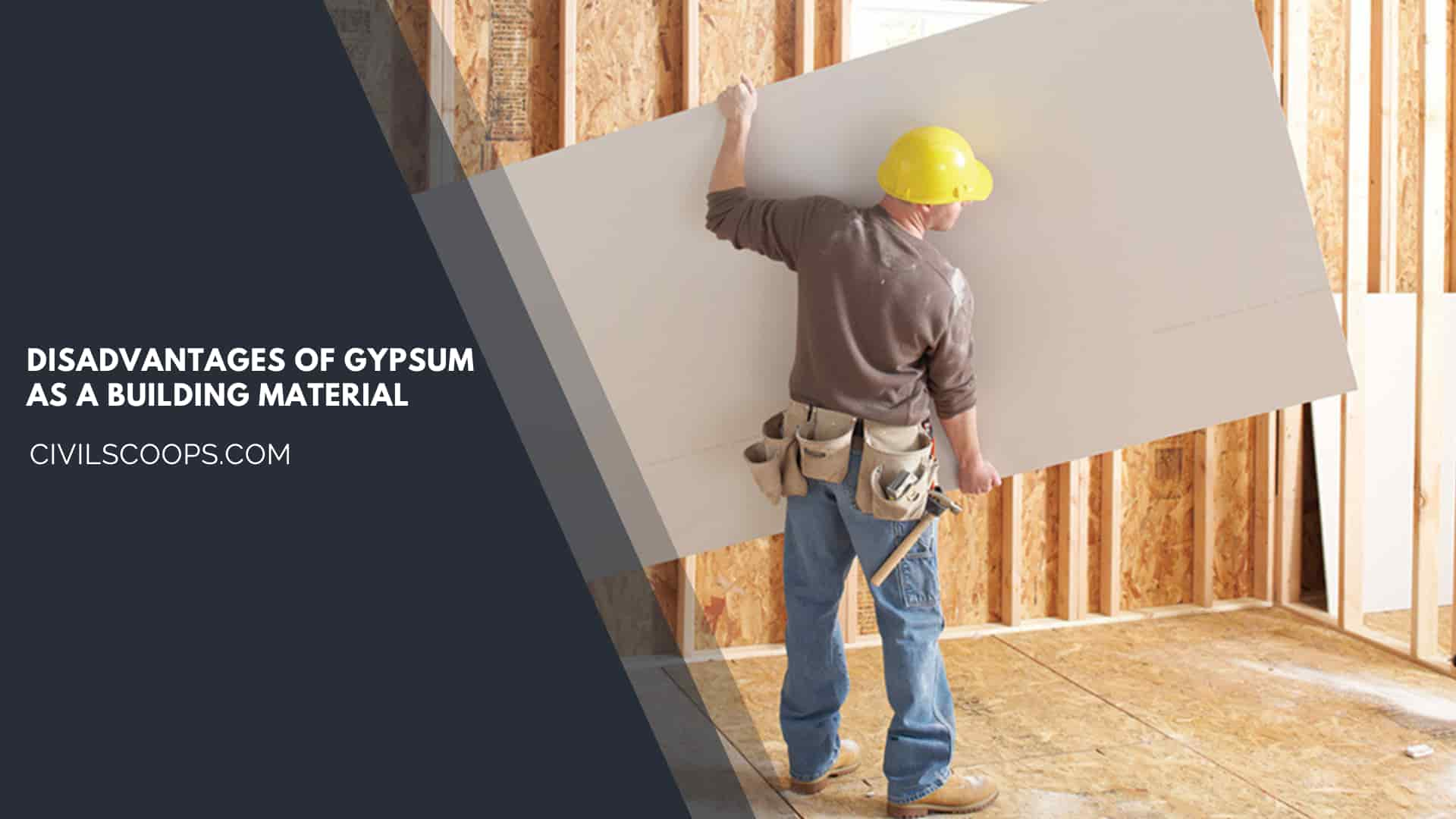
Gypsum also has some disadvantages which are as follows
- Gypsum is not water-resistant material: Gypsum has very less resistance to moisture due to which it cannot be used in the exterior of the buildings. The gypsum products may get disintegrate when it is exposed to moisture.
- Gypsum plaster is expensive as compared to cement plaster: The cost of plastering for the same thickness with the gypsum mortar is more than the cement mortar. So, it is not suitable to use gypsum mortar for low-budget construction projects.
- It is difficult to construct the curved shape with the help of gypsum: The Gypsum is not flexible due to which it is difficult to construct the curved shape components with the help of gypsum.
- Gypsum products have less resistance to the impact load and can damage due to friction: Gypsum products have less resistance to the impact load which makes them less durable.
Conclusion of Gypsum Board
The Gypsum board possesses various properties due to which it is one of the best building materials used in the interior designing of the building. You can use gypsum products for various types of construction works as per your requirements.
[su_box title=”FAQ” style=”default” box_color=”#333333″ title_color=”#FFFFFF” radius=”3″ class=”” id=””]
Gypsum Boards
Gypsum boards, also commonly known as drywall, plasterboard, or wallboard, are panels made from a core of gypsum (a mineral) sandwiched between layers of paper or other materials. These panels are widely used in construction and interior design for creating walls, ceilings, and partitions in buildings.
Gypsum Board Ceiling
Also known as plasterboards or drywall, gypsum plasterboards are prefabricated, ready-to-install calcium sulfate boards used for false ceilings. These come in different thicknesses and sizes, such as 9, 12, and 15 mm, and 4 x 6 feet, 4 x 8 feet, and 4 x 10 feet, respectively.
Gypsum Board Price
Standard gypsum is one of the cheapest materials used in false ceilings, and it costs around Rs 7,500 to Rs 8,500 for a 10×10 room. PVC false ceilings are very affordable, and their average cost for a 10×10 room is Rs 5,000 to Rs 7,000.
What Is Gypsum Board Used For?
Due to its inherent fire resistance, gypsum board, commonly known as drywall is the premier building material for wall, ceiling, and partition systems in residential, institutional, and commercial structures.
What Is the Price of Gypsum Board?
On average, in the United States, the cost of gypsum board panels can range from around $0.30 to $0.70 per square foot for standard panels. Thicker or specialized gypsum board panels, such as those with added features like fire resistance or moisture resistance, can be more expensive. Additionally, prices can vary regionally, so it’s a good idea to check with local building supply stores or suppliers to get accurate and up-to-date pricing for your specific location.
What Does Gypsum Board Look Like?
(a) Regular/Standard Gypsum Board
It is covered with ivory cardboard on its facing side, grey cardboard on the backside, and blue colour tape on the edges. This gypsum wall is used as a covering material for walls, ceilings, and partition walls. This type of gypsum board is ideal for gypsum false ceilings.
Types of Gypsum Board
Gypsum Board Types
- Regular Plasterboard.
- Moisture Resistant Gypsum Board.
- Fire Resistant Gypsum Boards.
- Exterior Boards.
Gypsum Wall Board
Gypsum wallboard is a manufactured panel made gypsum plaster and encased in a thin cardboard. GWB is widely used in the construction industry to create ceilings, partition panels, and wall panels.
Fire Rated Gypsum Board
Fire-rated gypsum board is a form of drywall that helps prevent the spread of flames across a home or business. Gypsum is approximately 21% chemically combined water, which greatly contributes to its effectiveness as a fire-resistive barrier.
Cost of Gypsum Ceiling
Cost of gypsum ceiling in Kenya ranges between KES 2, 000-3, 500 per square Metre based on each particular design from simple to complex. Aesthetics and durability is our first priority. Contact us today to schedule an estimate. Cost of Gypsum Ceiling in Kenya Gypsum Ceiling Supplies.
Suspended Gypsum Board Ceiling
Suspended gypsum board ceilings are used to provide flat, monolithic, cost-efficient ceiling surfaces. Rather than support by traditional ceiling joists, suspended systems are supported by the floor or roof level above through regularly spaced wire hangers.
Gypsum Board Roof
Gypsum boards applied directly to the roof deck not only act as a fire thermal barrier, but also provide a smooth substrate for applying air barriers and vapor retarders, in addition to all the strength and durability benefits that other materials can’t offer.
Gypsum Fiber Roof Board
Gypsum-fiber roof board is a high-performance roof board for use in low-slope roofing systems. Its unique, fiber-reinforced, homogenous composition gives the panel strength and water resistance through to the core.
Fiberglass Reinforced Gypsum Board
Glass Fiber Reinforced Gypsum (GRG) is a composite consisting of alpha gypsum cement and water, reinforced with glass fibers – an ideal choice as an economical, lightweight, and durable replacement for traditional plaster.
Is Gypsum Waterproof?
These prior art products, like ordinary gypsum wallboard, gypsum tile, gypsum block, gypsum casts, and the like have relatively little resistance to water. When ordinary gypsum wallboard, for example, is immersed in water, the board quickly absorbs a considerable amount of water, and loses a great deal of its strength.
[/su_box]
[su_note note_color=”#F2F2F2 ” text_color=”#333333″ radius=”3″ class=”” id=””]
Like this post? Share it with your friends!
Suggested Read –
- Types of Gable Roof
- Different Types of Roofing Materials | What is Roof Covering
- What Is Louvered Door? | 10 Different Types of Louvered Doors Available in Market
- 15 Types of Porch Used for Home | What Is Porch | How to Infer What Porch You Need
- What Is an Ice Dam | How to Remove Ice Dam From Roof | What Causes Ice Dams on Roof | How to Remove Ice Dams
[/su_note]
Originally posted 2023-08-15 10:50:20.
